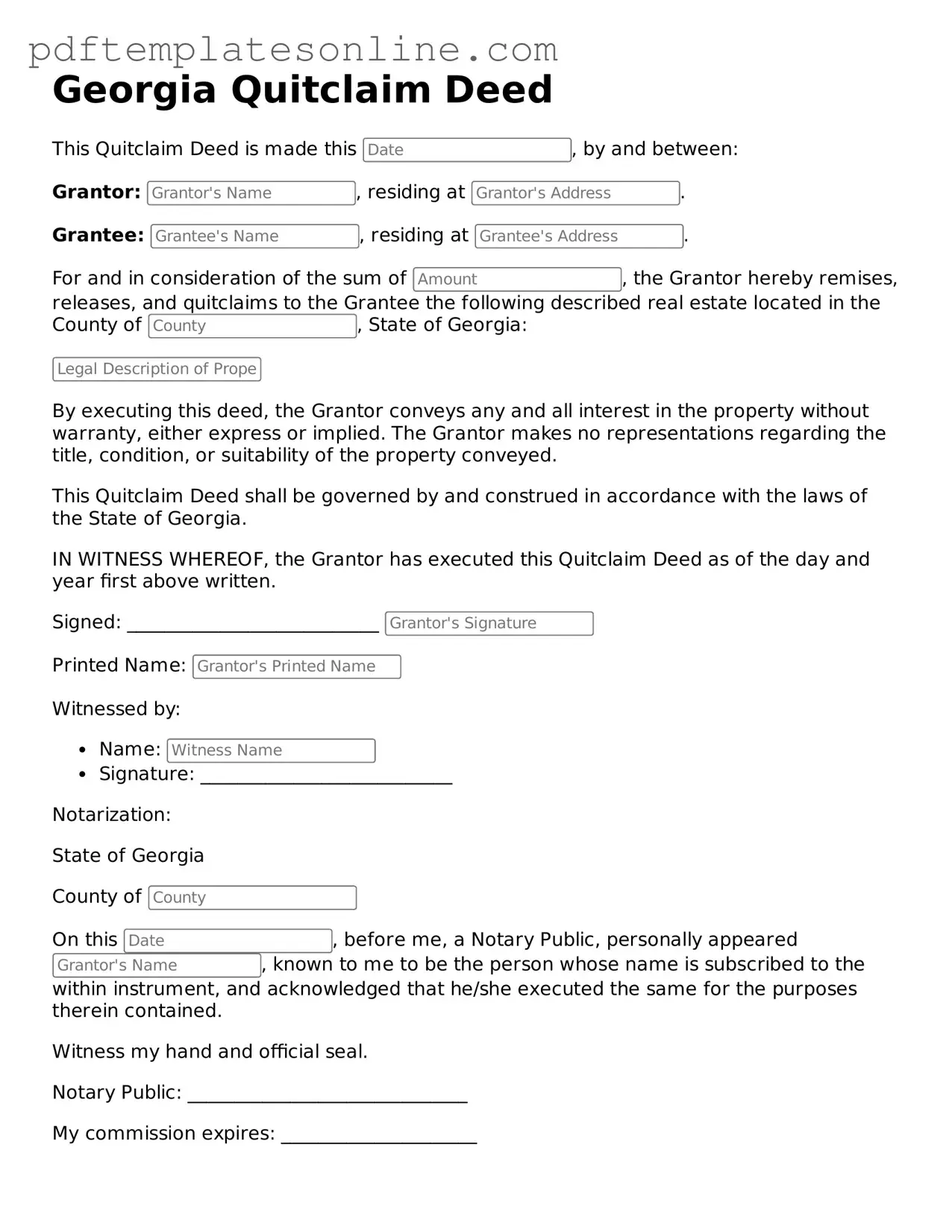Filling out a Georgia Quitclaim Deed form can be straightforward, but many people make common mistakes that can lead to complications. One major error is failing to include the correct legal description of the property. This description must be precise, as it identifies the property being transferred. Without it, the deed may be deemed invalid.
Another frequent mistake is not including the names of all parties involved. Both the grantor (the person transferring the property) and the grantee (the person receiving the property) must be clearly listed. Omitting a name can create confusion and may delay the transfer process.
People often forget to sign the Quitclaim Deed. A signature is essential for the document to be legally binding. If the grantor does not sign, the deed will not hold up in court. Additionally, the deed must be notarized. Some individuals overlook this step, thinking a signature alone suffices.
Another common error is misdating the document. The date of signing should be accurate and reflect when the transfer is intended to take effect. An incorrect date can lead to disputes or questions about the validity of the deed.
Many individuals fail to check the property tax records before completing the deed. It's important to ensure that there are no liens or other claims against the property. If there are, the grantee may inherit these issues, complicating their ownership.
People sometimes use vague language in the deed. The Quitclaim Deed should clearly state the intent of the transfer. Ambiguities can lead to misunderstandings and legal challenges down the line.
Another mistake involves not including the consideration amount. While a Quitclaim Deed can be used for a nominal fee or even as a gift, it’s important to note any consideration exchanged. This helps clarify the nature of the transaction.
Forgetting to file the Quitclaim Deed with the appropriate county office is another error. Once completed, the deed must be recorded to be effective. If it’s not filed, the transfer may not be recognized legally.
Some individuals neglect to review the form for errors before submission. Typos or incorrect information can lead to delays or rejections. A thorough review can save time and prevent issues.
Lastly, people may not seek legal advice when needed. While a Quitclaim Deed is relatively simple, consulting with a legal expert can help ensure that all aspects of the transfer are handled correctly. This can provide peace of mind and protect all parties involved.
